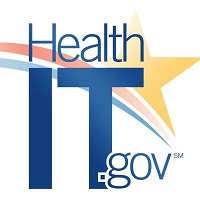 By Brett Coughlin, Health Communications Specialist, ONC
By Brett Coughlin, Health Communications Specialist, ONC
Twitter: @ONC_HealthIT
One in an occasional series of “Where-are-they-now?” posts about ONC Awardees
One of four High Impact Pilot recipients, which developed a care plan platform to help pharmacists coordinate care with patients, is now operating in all 50 states.
This tool was one example of how pharmacists’ responded to the wave of value-based, coordinated care that emerged in US healthcare in the 1990s and 2000s. As this is National Pharmacy Week we wanted to highlight how pharmacists are using health IT to help patients receive coordinated care even outside of the doctor’s office.
An open-sourced project started as a collaboration between Lantana Consulting Group, the Community Collaborative of North Carolina (CCNC), and other partners was piloted in North Carolina and initially put three key tools into the public domain for users:
- Standardized Pharmacist Care plans using Clinical Document Architecture (CDA) Health Level 7 (HL7®) International’s Fast Healthcare Interoperability Resources (FHIR®) implementation guides.
- A library of bi-directional transformations converting FHIR to and from CDA, and,
- In-person FHIR and CDA training for implementers.
The care plan tool then started to improve on the standard and helped pharmacists in a number of ways, according to the platform’s creator, Rick Geimer.
The project:
- Reduced redundant manual data entry and increased time for patient engagement with pharmacists.
- Improved clinical quality while increasing structured data capture, and automated clinical quality measurement,
- Sped data sharing between pharmacies and Community Care of North Carolina, while supporting reporting requirements for MIPS, etc., and,
- Finally, it delivered standard-based structured and coded reports that could be validated (CDA to FHIR).
CCNC, which helped pioneer the care plan platform for pharmacists, won a $15 million federal award from CMS/CMMI in 2014.
Geimer said it is now ubiquitous in the pharmacy community and known as the Pharmacist eCare Plan (PeCP).
The Pharmacy Care Plan (PhCP) standard on which the platform was based, now tested and expanded, was adopted by HL7 and the National Council for Prescription Drug Programs (NCPDP).
It serves as an interoperable way to “prioritize drug therapy problem lists” and creates a care plan that includes “social determinants of health, an adherence assessment, interventions made by the pharmacy team, clinical goals, and referrals to other members of the healthcare team,” wrote Amina Abubakar, PharmD, CEO of Rx Clinic Pharmacy, in Pharmacy Today (May 2018). Abubakar was an early adopter of PeCP and a practicing pharmacist in Charlotte, NC.
The PeCP is now tested and up and running across the country, said Shelly Spiro, executive director of the Pharmacy HIT Collaborative. It interacts with a wide swath of Electronic Health Record (EHR) developers, is in the process of being ANSI accredited (a standard used for reimbursement purposes) and has become ubiquitous throughout the country for pharmacists in some settings, Spiro said. She added that pharmacists are often the healthcare professional seen most by patients: more than 30 times per year.
This post was originally published on the Health IT Buzz and is syndicated here with permission.
